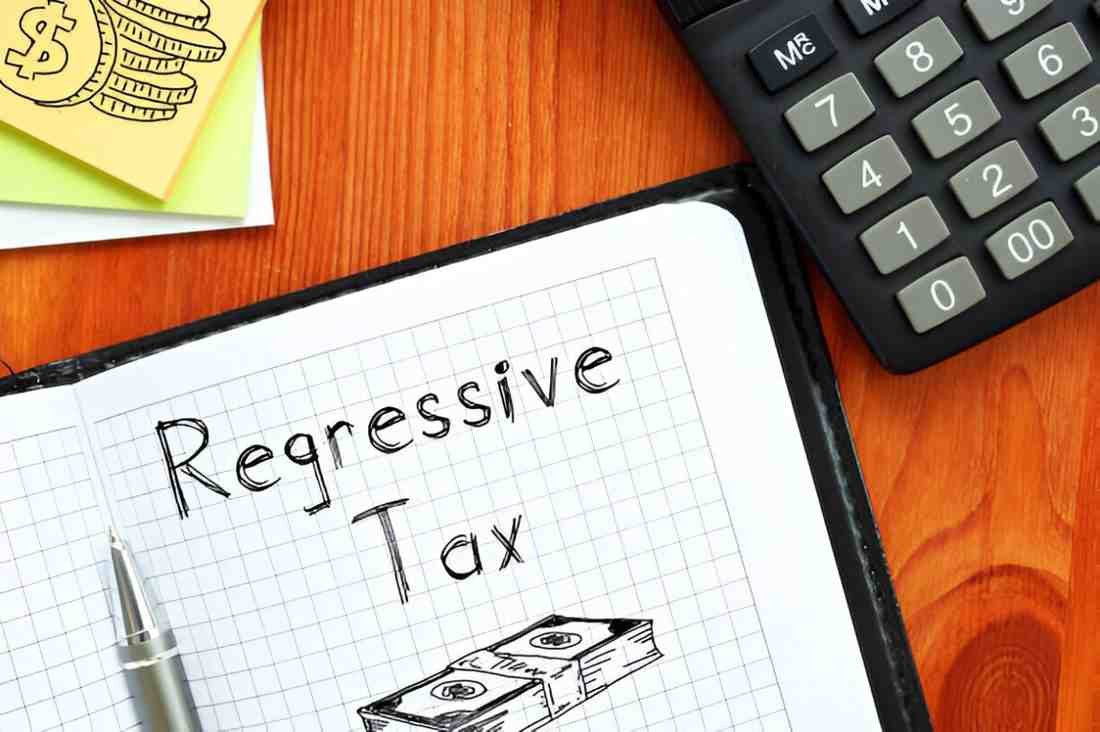Taxes are a fundamental part of any economy, shaping how resources are distributed and how governments fund public services. Among the various types of taxes, regressive taxes stand out for their unique impact on different income groups. In this article, I will explore what regressive taxes are, how they function, and their implications for individuals across the socioeconomic spectrum. I will also provide examples, calculations, and comparisons to help you understand this complex topic.
Table of Contents
What Are Regressive Taxes?
A regressive tax is a tax that takes a larger percentage of income from low-income earners than from high-income earners. Unlike progressive taxes, where the tax rate increases as income rises, regressive taxes impose a heavier relative burden on those with less financial means. Common examples include sales taxes, excise taxes, and certain flat taxes.
To illustrate, consider a sales tax on groceries. If two individuals, one earning \$20,000 per year and another earning \$200,000 per year, both spend \$5,000 on groceries annually, a 10% sales tax would cost each of them \$500. However, this \$500 represents 2.5% of the lower earner’s income but only 0.25% of the higher earner’s income. This disparity highlights the regressive nature of the tax.
How Regressive Taxes Work
Regressive taxes are often levied on consumption rather than income. This means they are applied uniformly regardless of the taxpayer’s ability to pay. For example, gasoline taxes are the same for everyone, but they consume a larger share of a low-income individual’s budget compared to a high-income individual.
Let’s break this down with a mathematical example. Suppose the federal gasoline tax is \$0.18 per gallon. If a low-income worker earning \$25,000 annually drives 10,000 miles per year in a car that averages 25 miles per gallon, they will purchase 400 gallons of gasoline. The total tax paid would be:
\text{Tax} = 400 \times 0.18 = \$72For a high-income worker earning \$250,000 annually driving the same distance and vehicle, the tax paid would also be \$72. However, the tax represents 0.29% of the low-income worker’s salary but only 0.029% of the high-income worker’s salary. This disparity underscores the regressive nature of such taxes.
Types of Regressive Taxes
Regressive taxes come in various forms, each affecting different income groups in distinct ways. Below, I will discuss some of the most common types.
Sales Taxes
Sales taxes are levied on the purchase of goods and services. In the U.S., state and local governments often impose these taxes, with rates varying by jurisdiction. Because low-income individuals spend a larger proportion of their income on taxable goods, sales taxes disproportionately affect them.
For example, if a state imposes a 7% sales tax, a low-income family spending \$20,000 annually on taxable items would pay \$1,400 in sales tax. A high-income family spending \$50,000 on the same items would pay \$3,500. While the high-income family pays more in absolute terms, the tax consumes a smaller fraction of their income.
Excise Taxes
Excise taxes are levied on specific goods, such as gasoline, tobacco, and alcohol. These taxes are often justified as a way to discourage harmful behaviors, but they also tend to be regressive. For instance, low-income individuals are more likely to smoke cigarettes, making tobacco taxes particularly burdensome for this group.
Consider a pack of cigarettes with a \$2 excise tax. If a low-income smoker purchases 100 packs annually, they pay \$200 in excise taxes. A high-income smoker purchasing the same amount pays the same \$200, but the financial impact is far greater for the low-income individual.
Flat Taxes
Flat taxes are a type of income tax where everyone pays the same rate, regardless of income. While they may seem fair at first glance, they are regressive because they do not account for the differing abilities to pay. For example, a 10% flat tax would take \$2,000 from someone earning \$20,000 and \$20,000 from someone earning \$200,000. The lower earner is left with \$18,000, while the higher earner retains \$180,000, illustrating the disproportionate burden.
The Impact of Regressive Taxes on Different Income Groups
Regressive taxes have far-reaching consequences for individuals and society as a whole. Below, I will examine their impact on low-income, middle-income, and high-income groups.
Low-Income Groups
Low-income individuals are the most affected by regressive taxes. Because they spend a larger portion of their income on necessities like food, clothing, and transportation, taxes on these items consume a significant share of their earnings. This leaves them with less disposable income for savings, investments, or discretionary spending.
For example, a family earning \$30,000 annually might spend \$10,000 on taxable goods and services. With a 7% sales tax, they pay \$700 in taxes, which is 2.3% of their income. In contrast, a family earning \$300,000 spending \$50,000 on taxable items pays \$3,500, or 1.2% of their income. The lower-income family bears a heavier relative burden.
Middle-Income Groups
Middle-income individuals also feel the impact of regressive taxes, though to a lesser extent than low-income groups. They often have more disposable income, but taxes on consumption still reduce their ability to save or invest. For instance, a middle-income family earning \$75,000 spending \$25,000 on taxable items would pay \$1,750 in sales tax, or 2.3% of their income. While this is similar to the low-income family’s burden, the middle-income family has more flexibility to adjust their spending.
High-Income Groups
High-income individuals are the least affected by regressive taxes. Because they spend a smaller proportion of their income on taxable goods, these taxes consume a minimal share of their earnings. For example, a high-income family earning \$500,000 spending \$100,000 on taxable items would pay \$7,000 in sales tax, or 1.4% of their income. This leaves them with ample resources for savings, investments, and discretionary spending.
Comparing Regressive and Progressive Taxes
To better understand regressive taxes, it’s helpful to compare them with progressive taxes. Progressive taxes, such as the U.S. federal income tax, increase as income rises. This ensures that those with greater financial means contribute a larger share of their income to public services.
For example, under the 2023 federal income tax brackets, a single filer earning \$50,000 pays 12% on income above \$11,000, while a filer earning \$500,000 pays 35% on income above \$231,250. This system aims to reduce income inequality by placing a heavier burden on high earners.
In contrast, regressive taxes exacerbate income inequality by placing a heavier burden on low earners. This creates a cycle where those with less financial means struggle to build wealth, while those with more resources continue to accumulate wealth.
The Role of Regressive Taxes in the U.S. Economy
Regressive taxes play a significant role in the U.S. economy, particularly at the state and local levels. Many states rely heavily on sales and excise taxes to fund public services like education, infrastructure, and healthcare. While these taxes provide a steady revenue stream, they also place a disproportionate burden on low-income residents.
For example, according to the Institute on Taxation and Economic Policy (ITEP), the bottom 20% of earners in the U.S. pay an average of 11.4% of their income in state and local taxes, while the top 1% pay only 7.4%. This disparity highlights the regressive nature of the U.S. tax system.
Addressing the Inequities of Regressive Taxes
Given the disproportionate impact of regressive taxes on low-income individuals, policymakers have proposed various solutions to address these inequities. Below, I will discuss some of the most common approaches.
Exempting Essential Goods
One way to reduce the burden of regressive taxes is to exempt essential goods like food and medicine from sales taxes. Many states already do this, but the exemptions vary widely. For example, some states exempt all food purchases, while others only exempt unprepared food.
By exempting essential goods, policymakers can ensure that low-income individuals are not unduly burdened by taxes on necessities. However, this approach can also reduce tax revenue, forcing governments to find alternative funding sources.
Implementing Refundable Tax Credits
Refundable tax credits, such as the Earned Income Tax Credit (EITC), can help offset the impact of regressive taxes on low-income individuals. These credits provide a refund to taxpayers even if they owe no taxes, effectively increasing their disposable income.
For example, a low-income worker earning \$20,000 annually might receive a \$2,000 EITC. This credit can help offset the \$1,400 they pay in sales taxes, reducing their overall tax burden.
Shifting to Progressive Tax Structures
Another solution is to shift from regressive to progressive tax structures. For example, states could reduce their reliance on sales taxes and increase income taxes on high earners. This would ensure that those with greater financial means contribute a larger share of their income to public services.
However, this approach can be politically challenging, as high-income individuals and businesses often oppose higher taxes. Policymakers must carefully balance the need for revenue with the goal of reducing income inequality.
Conclusion
Regressive taxes have a profound impact on different income groups, placing a heavier burden on low-income individuals and exacerbating income inequality. While these taxes provide a steady revenue stream for governments, they also create significant challenges for those with less financial means. By understanding the mechanics and implications of regressive taxes, we can better advocate for policies that promote fairness and equity in the tax system.





